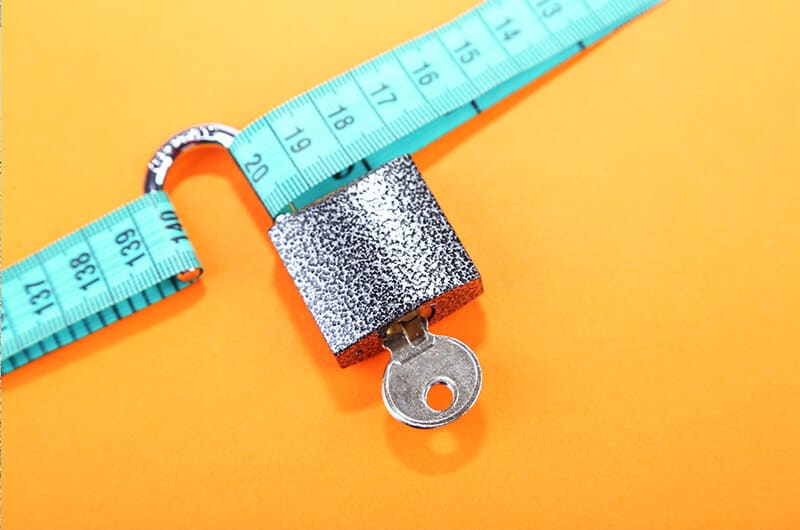- PhentermineLearn more about phentermine and how to get the most from your weight loss journey.
- ResourcesAdditional information and tools to help you make the most of your effort.
- AlternativesLearn more about the most popular weight loss medications and science-backed supplements
10 Tips to Get Past A Weight Loss Plateau
Published on December 12, 2024

Seeing those stubborn pounds disappear when you’re totally committed to working out and munching on healthy stuff is awesome. But let’s be real, bumping into a weight loss plateau is something we all dread. Okay, losing weight isn’t the only health milestone, yet when it’s your prime target, it’s incredibly frustrating when progress suddenly hits the brakes, even though you’re doing everything right.
If you have been losing weight but suddenly hit a plateau, know that it is also normal. And while you may jump to conclude you reached one because you were not working hard enough, or your willpower was not up to par, you might find comfort knowing that this phenomenon is a result of your biological needs trying to counter your efforts. And all you may need to do is fight back harder.
In this article, we will discuss the possible causes of a weight loss plateau and the many things you can do to overcome it.
Possible Causes of Weight Loss Plateau
When someone reaches a weight loss plateau, he or she will no longer lose any weight, despite following a good diet and fitness program. Evidence found that weight loss plateaus often occur after about 6 months of following a low-calorie diet (1).
Physicians are unsure why weight loss plateaus occur, but there are some theories, which include the following:
1. You’re Not Getting Enough Calories
It takes calories to burn calories. As a response to decreasing your food intake, your body also lowers its metabolic rate. If you are not getting enough calories, or you are not consistent, your body and metabolism may respond erratically.
2. Your Calorie Counting Is Off
There are several ways to track your daily intake of calories and nutrients. Are you doing it using the traditional paper journal or are you relying on an online app? By entering foods by memory, the chances are you are forgetting to add a portion of food here and there or inputting an incorrect portion size.
3. You Are Not Watching Portions
You probably have measured your food at the beginning of your diet, but have you gotten less careful about checking your portion size? It is very easy to make small increases in the amount of food you pour into your plate, and inaccurate portion size guesses can bulk up.
4. You Are Eating More Than You Need
If you have already lost weight successfully, the number of calories you may need to eat daily has probably started to decrease. As you get lighter, you need fewer calories to move through your normal daily activities. Your calorie requirement changes as your weight decreases.
5. You Have Lost Lean Body Mass
Muscles burn fat. If you lose muscle, you will burn fewer calories. Lean body mass needs five times as many calories as fat mass. When lean muscles are lost, your metabolism will surely drop low. As a result, weight loss slows down or stops.
6. Your Body Adapted
Starting a new exercise program will prompt your body to start making changes. At this stage, your muscles will start rebuilding themselves, which will require calories. Eventually, your body will stop adapting to increased workloads. Unless you regularly change your routine, you will be burning fewer calories for the same activities.
7. You Are Not Moving Enough
How do you rest and compensate for your workouts? Do you sit at your desk or lay on your couch for the rest of the day? If you are sedentary for most of the day, you are missing out on the many benefits of exercise.
8. You Are Exercising Too Much
Did you know that aside from living a sedentary lifestyle, working out excessively can also cause you trouble? There is a point of diminishing returns when an increase in exercise expenditure is negated by an equal decrease in non-exercise energy expenditure. Increasing your exercise intensity will make your body respond by decreasing the number of calories you burn during the rest of the day.
9. You Lack Protein
Protein is known to be effective in balancing out some of the metabolic adjustments that occur when you lose weight. This is because of its ability to maintain the muscles we have and build new ones.
10. You Have Lost Motivation
When you first start a diet and fitness program, your motivation is extremely high and you enjoy the “honeymoon phase” for quite some time. However, sticking to a restrictive or low-calorie diet plan and exercise routines daily can be challenging or, at times, unrealistic. Small, unconscious fluctuations in your daily calorie intake or being unable to adhere to your diet plan can cause weight loss plateaus (1). This may cause frustrations to ramp up, dwindling more your motivation.
Is There A Medical Cause?
While plateaus are normal and just about every individual will experience one as soon as they start dieting, if you are finding that nothing seems to be breaking the plateau, it is best to consult a doctor. In some cases, though rarely, a medical cause may be impeding your weight loss.
You may want to look for a physical cause. Physical barriers to weight loss can be as simple as lack of sleep or as complex as a medical diagnosis.
1. Fatigue
Most people would cite tiredness as a common reason for not exercising. Exhaustion and sleep deprivation can also be the culprit why dieters fall back into unhealthy eating habits. Studies have shown that sleep affects the production of ghrelin and leptin, which are hormones that affect appetite, fat metabolism, and weight loss. Experts found that those who sleep less are more likely to get a higher BMI (2).
2. Discomfort
For some people, simple discomfort presents a physical barrier to eat healthily and exercise. Many would quit their routines because the exercise feels too difficult. Evidence also found that dieters often cite “poor taste” as the reason they did not eat healthier foods when they were trying to lose weight (3).
3. Hormonal Changes
Hormonal changes, specifically in women, will not only make it hard to lose weight. In some cases, these changes can even cause weight gain. Women of childbearing age often gain weight immediately before and during menstruation.
If you notice occasional weight gain or feel like you are no longer losing weight despite all your efforts, track your period and see if a pattern emerges. Water weight around the time of menstruation will go away after your period ends.
Several studies report that weight changes happen during perimenopause, menopause, and post-menopause (4). However, the exact cause remains debatable. Some experts found that hormonal changes cause women to gain extra weight in their midsection (5). Others say they will generally experience a slower metabolism in the years around menopause, making it difficult to lose weight.
Researchers also point out that physical changes and weight gain often attributed to menopause are also related to lifestyle changes that commonly occur in midlife. Evidence found that women who remained active through menopause experienced little to no weight gain (4).
4. Medications
Corticosteroids, some antidepressants, and medications used to treat certain psychiatric disorders often make weight loss more difficult. Additionally, some high blood pressure and diabetes drugs may also cause you to gain weight.
10 Tips to Get Past A Weight Loss Plateau
If you are committed to losing more weight, there are tips you can follow to get past the plateau stage:
1. Limit Your Carb Intake
Evidence has confirmed that low-carb diets are very effective for weight loss. In fact, a review of studies with follow-up lasting at least one year found that people who had 50 or fewer grams of carbs daily lost more weight than those who followed traditional weight-loss diets (6).
Limiting your carb intake can help get your weight moving in the right direction again when you feel hopelessly stalled. Whether carb reduction causes a metabolic advantage that will prompt your body to burn more calories is a question that continues to be debated among obesity and nutrition experts.
Some studies have linked very low-carb diets to increased fat burning and other metabolic changes that favor weight loss, but some haven’t shown the same results (7, 8, 9, 10).
However, very low-carb diets have consistently been shown to decrease hunger and promote feelings of fullness compared to other diets. Also, they cause your body to produce ketones, which can curb appetite (11, 12, 13). This will make you eat less unconsciously, making it simpler to start losing weight again without the discomfort and hunger.
2. Increase Exercise Frequency and Intensity
Reviving up your exercise, but not excessively, may help reverse a weight loss plateau. This is because, unfortunately, your metabolism slows down as you lose weight. According to a study, for every pound of weight you lost, you may burn 6.8 fewer calories, on average (14).
As your weight continues to decline, the progressive reduction in metabolic rate can make continued weight loss more difficult. The good news is that exercise can counteract this effect.
Resistance training can help promote the retention of muscle mass, which as discussed earlier is a big factor influencing how many calories you burn during exercise and at rest. Actually, this appears to be the most effective type of exercise for weight loss (15, 16). Young, obese women who took a low-calorie diet and lifted weights for 20 minutes daily had an average loss of 13 pounds and 2 inches from their waistlines (17).
Other kinds of physical activity have also been shown to protect against a metabolic slowdown, including aerobic exercises and HIIT (18, 19, 20, 21).
If you are already working out, exercising an extra 1-2 days per week or increasing the intensity of your routines to the right level may help boost your metabolic rate.
3. Record What You Eat
Sometimes, it may seem as though you are not eating too much, yet you still have difficulty losing weight. Overall, experts have reported that people have a tendency to underestimate the amount of food they consume (22, 23). Evidence found that obese people who are reporting intake of about 1,200 calories per day actually showed nearly twice the amount, on average, after a detailed analysis over 2 weeks (23).
Tracking your calories and macronutrients – carbs, protein, and fat can provide concrete information about how much you are eating. This allows you to make diet modifications if necessary. Also, studies suggest that the act of recording your intake alone can enhance your weight loss efforts (24, 25).
4. Never Skimp on Protein
If your weight loss has reached a plateau, increasing your protein intake may help. Protein can boost your metabolic rate twice more than either carbs or fat. This has to do with the thermic effect of food (TEF). Protein digestion increases calorie burning by as much as 20-30% (26).
A study on healthy young women followed diets that provided 15% or 30% of calories from protein on two separate days. Results showed that their metabolic rate has increased twice as much after meals on higher-protein day (27).
Protein can also stimulate the production of hormones like PYY, which reduces appetite and make you feel satisfied and full (28, 29). More so, maintaining a high protein diet can help protect against muscle loss and a drop in metabolic rate, both of which normally occur during weight loss (30, 31, 32).
5. Manage Stress
Stress can put the brakes on weight loss! Aside from promoting comfort eating and food cravings, it also increases your body’s production of cortisol. While cortisol may help your body respond to stress, it can likewise increase belly fat storage. This effect appears to be stronger in women (33, 34).
Learning to manage stress can help promote weight loss (35, 36). A study on obese women where a stress-management program, which included deep breathing and muscle relaxation led to an average weight loss of 9.7 pounds (36).
6. Try Intermittent Fasting (IF)
Who doesn’t know about IF? It has become very popular in the past few years. It involves going for long periods of time without eating, normally between 16-48 hours. This practice has been credited with promoting the loss of weight and body, along with other health benefits.
A review of several studies found that it can cause 3-8% weight loss and a 3-7% decrease in waistline within 3-24 weeks (37). Alternate-day fasting is a form of IF in which people alternate between eating few calories on one day and as much as they want the next. Evidence found that this way of eating can help protect against muscle mass loss more than regular calorie reduction (38).
7. Avoid Alcohol
Alcohol can sabotage your weight loss efforts. Although a single drink, which is equal to 4 ounces of wine, 1.5 ounces of hard liquor, or 12 ounces of beer, contains only about 100 calories, it offers no nutritional value. Also, many people often take more than one drink per sitting.
Another problem is that alcohol loosens inhibitions, which can cause you to overeat or make food choices. This can be problematic for those trying to overcome impulsive food-related behaviors. One study proved that reducing alcohol intake can lead to a reduction in overeating and greater weight loss among people with high levels of impulsivity (39). What’s more, experts found that alcohol suppresses fat burning and may cause belly fat to accumulate (40).
So, if your weight loss has stalled, it is best to avoid alcohol or only drink occasionally in small amounts.
8. Consume More Fiber
Eating more fiber can help you break through a weight loss plateau. This is very true for soluble fiber, the kind that dissolves in water. To start with, soluble fiber delays the movement of food through your gut, which can help you feel full and satisfied (41).
Although evidence suggests that all kinds of fiber can be helpful for weight loss, a large review of studies found that a soluble fiber was the most effective at keeping appetite and food intake under control (41, 42).
Another way that fiber can help with weight loss is by reducing the number of calories you absorb from other foods. An analysis of calorie absorption among diets with varying counts of fiber showed that increasing daily fiber intake from 18-36 grams can lead to 130 fewer calories being absorbed from mixed foods (43).
9. Drink Water, Tea, or Coffee
While sugary drinks may cause weight gain, some beverages can help reverse a weight-loss stall. Studies have found that plain water can speed up metabolism by as much as 24-30% for 1.5 hours after drinking 500 ml serving (44, 45). This can translate into weight loss over time, especially for those who take water before meals and help reduce food intake. Evidence showed that older adults who followed a weight loss diet and consumed one serving of water before meals lost 44% more weight than those who did not (46).
Tea and coffee may also benefit your weight loss efforts. These drinks normally have caffeine, which can increase fat burning and boosts the metabolic rate by up to 13%. However, these effects are more profound in lean individuals (47, 48, 49, 50). Also, green tea has an antioxidant known as epigallocatechin gallate (EGCG), which can help speed up fat burning by as much as 17% (50).
Other studies suggest that drinking caffeinated beverages can significantly improve the fat burning and metabolism-boosting effects exercise (51, 52).
10. Get Plenty of Sleep
Sleep is very important for physical, emotional, and mental health. It is also becoming clear that sleep deprivation can cause weight gain by lowering your metabolic rate and altering hormone levels to drive fat storage and appetite (53, 54, 55, 56). In fact, not getting enough sleep may be a contributing factor in your case of stalled weight loss. Evidence showed that healthy people who slept 4 hours per night for 5 days in a row experienced a 2.6% decrease in resting metabolic rate, which returned to their baseline levels after sleeping for 12 hours (54). If you want to continue losing weight and promote overall health, aim for 7-8 hours of sleep per night.
The Bottomline
Weight loss plateaus can really be frustrating and at times, demoralizing. However, they are a normal part of the weight loss process. In fact, nearly everyone experiences a stall at some point on their journey.
Luckily, there are several tips you can follow to start losing weight again and achieve your goal weight healthily. Stay focused and determined!
References:
(1) https://www.ncbi.nlm.nih.gov/pmc/articles/PMC4135489/pdf/ajcn1003787.pdf
(2) https://journals.plos.org/plosmedicine/article?id=10.1371/journal.pmed.0010062
(3) https://www.sciencedirect.com/science/article/abs/pii/S027795360500273X
(4) https://academic.oup.com/aje/article/160/9/912/86561
(5) https://www.em-consulte.com/article/79856
(6) https://www.ncbi.nlm.nih.gov/pubmed/23651522
(7) https://www.ncbi.nlm.nih.gov/pubmed/21367948
(8) https://www.ncbi.nlm.nih.gov/pubmed/16469983
(9) https://www.ncbi.nlm.nih.gov/pubmed/20565999
(10) https://www.ncbi.nlm.nih.gov/pubmed/27385608
(11) https://www.ncbi.nlm.nih.gov/pubmed/17228046
(12) https://www.ncbi.nlm.nih.gov/pubmed/16129086
(13) https://www.ncbi.nlm.nih.gov/pubmed/25402637
(14) https://www.ncbi.nlm.nih.gov/pubmed/19761507
(15) https://www.ncbi.nlm.nih.gov/pubmed/18356845
(16) https://www.ncbi.nlm.nih.gov/pubmed/24358230
(17) https://www.ncbi.nlm.nih.gov/pubmed/24393798
(18) https://www.ncbi.nlm.nih.gov/pubmed/2923073
(19) https://www.ncbi.nlm.nih.gov/pubmed/19276190
(20) https://www.ncbi.nlm.nih.gov/pubmed/26213682
(21) https://www.ncbi.nlm.nih.gov/pubmed/16526835
(22) https://www.ncbi.nlm.nih.gov/pubmed/23704170
(23) https://www.ncbi.nlm.nih.gov/pubmed/1454084
(24) https://www.ncbi.nlm.nih.gov/pubmed/23229890
(25) https://www.ncbi.nlm.nih.gov/pubmed/18617080
(26) https://www.ncbi.nlm.nih.gov/pmc/articles/PMC524030/
(27) https://www.ncbi.nlm.nih.gov/pubmed/11838888
(28) https://www.ncbi.nlm.nih.gov/pubmed/18544972
(29) https://www.ncbi.nlm.nih.gov/pubmed/16950139
(30) https://www.ncbi.nlm.nih.gov/pubmed/26883880
(31) https://www.ncbi.nlm.nih.gov/pubmed/23446962
(32) https://www.ncbi.nlm.nih.gov/pubmed/19927027/
(33) https://www.ncbi.nlm.nih.gov/pubmed/18984030
(34) https://www.ncbi.nlm.nih.gov/pubmed/16353426
(35) https://www.ncbi.nlm.nih.gov/pubmed/22505570
(36) https://www.ncbi.nlm.nih.gov/pubmed/23627835
(37) https://www.ncbi.nlm.nih.gov/pubmed/24993615
(38) https://www.ncbi.nlm.nih.gov/pubmed/21410865
(39) https://www.ncbi.nlm.nih.gov/pubmed/26792773
(40) https://www.ncbi.nlm.nih.gov/pubmed/16047538
(41) https://www.ncbi.nlm.nih.gov/pubmed/19335713
(42) https://www.ncbi.nlm.nih.gov/pubmed/21676152
(43) https://academic.oup.com/jn/article/127/4/579/4728747
(44) https://www.ncbi.nlm.nih.gov/pubmed/17519319
(45) https://www.ncbi.nlm.nih.gov/pubmed/14671205
(46) https://www.ncbi.nlm.nih.gov/pubmed/19661958
(47) https://www.ncbi.nlm.nih.gov/pubmed/7485480
(48) https://www.ncbi.nlm.nih.gov/pubmed/14684395
(49) https://www.ncbi.nlm.nih.gov/pubmed/2912010
(50) https://www.ncbi.nlm.nih.gov/pubmed/18326618
(51) https://www.ncbi.nlm.nih.gov/pubmed/27331913
(52) http://jhs.pharm.or.jp/data/51(2)/51_233.pdf
(53) https://www.ncbi.nlm.nih.gov/pubmed/22496545
(54) https://www.ncbi.nlm.nih.gov/pubmed/26538305
(55) https://www.ncbi.nlm.nih.gov/pmc/articles/PMC535701/
(56) https://www.ncbi.nlm.nih.gov/pubmed/22972835


